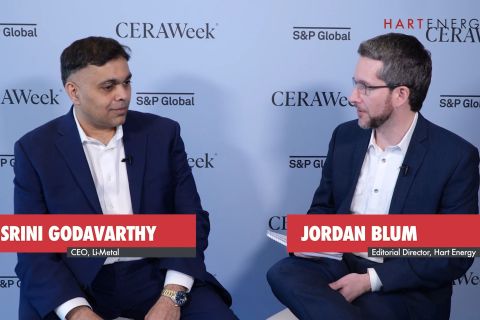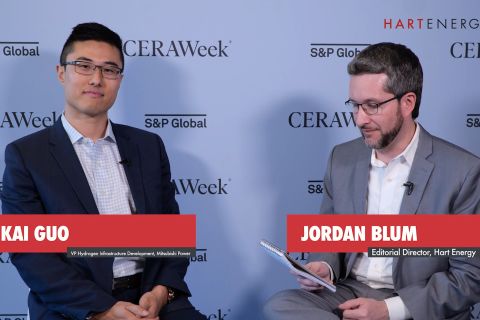
DALLAS—What’s the secret to running an energy company? Finding new reserves? Cutting costs? Admirable safety records? Keeping investors happy?
All of those challenges can be summed up in how management handles risks. That was a common theme in some two-dozen investor presentations given Feb. 27-28 at Enercom’s Dallas 2019 investor symposium. The conference drew a crowd of more than 100 analysts, investors and industry observers.
“All we do is manage risk,” Talos Energy President and CEO Timothy Duncan told conference attendees, echoing comments in other presentations as executives described how their organizations cope with an unsettled market.
Talos’ focus has been on the Gulf of Mexico, both in the U.S. and Mexico. Duncan noted Talos’ Zama discovery in Mexico drew Wood McKenzie’s rating as the 2017 discovery of the year. Talos was a first mover into Mexico’s upstream following that nation’s constitutional changes that allowed private firms to enter exploration and production for the first time in eighty years.
In U.S. waters, he said the firm’s extensive seismic footprint, coupled with advanced reprocessing, will all Talos to develop its portfolio around deepwater infrastructure it now holds, including Green Canyon and Mississippi Canyon.
Likewise, GeoPark CEO James F. Park described his firm as “a risk management business.” It’s business model—creating and operating “a Texas-style independent in Latin America”—has been a challenge but has been successful, he said.
Park noted GeoPark production grew from 6,000 barrels of oil equivalent per day (Mb/d) to 36 Mb/d in nine years, from 2009 to 2018. Net present value has increased by a compound annual growth rate of 26%, he added. The firm has operations in Argentina, Brazil, Chile, Colombia and Peru.
GeoPark has had major finds in Colombia’s Llanos Basin and Peru’s Marañon Basin, as well as Chile’s the first oil production.
One of the industry’s more diversified players, Tulsa, Okla.-based Unit Corp., must consider the risks and rewards of investing capital in its three businesses: exploration and production, drilling, and midstream gathering and processing.
“We are in as good a shape as we have been in the 38 years I have been in this business,” Unit President and CEO Larry Pinkston told the conference, “because of a history of excellent capital stewardship.”
Upstream, “our prospect inventory is very good,” he added.
Pinkston said Unit’s upstream portfolio offers high-return drilling opportunities, growing oil and liquids component, and attractive full-cycle. In the midstream, its Superior Pipeline subsidiary “enhances Unit’s all-in drilling economics and provides a predictable cash flow stream, supported by both Unit and third-party volumes.” Meanwhile, Unit Drilling “has a high-spec AC rig fleet that is fully contracted.”
Data, and its potential uses, allow producers to better manage risk through rapid development of artificial intelligence and machine learning, said Tom Chikoore, founding principal with Innovation Illustrated, a data management consulting firm.
Unfortunately, many energy-firm data management projects “fail to get out of the laboratory,” Chikoore said. Such projects “have got to marry the business objectives” of a firm to be a success. But the potential rewards can be tremendous when that happens, he added. Businesses “can leapfrog [competitors] because they have a lot of data” and know how to use it.
Brian Lidsky, senior director at Drillinginfo, also had much to say about data and its impact on managing risk.
“We’re a decade into the shale revolution,” Lidsky reminded the conference, and the industry has a vast amount of financial and operational data to draw on to help executives make wise decisions. The challenges is to make all that information usable.
Although commodity markets have been unsettled, he pointed out “the good news in terms of prices is that, basically, we’re where we were a year ago” despite ups and downs in recent months.
But Wall Street hasn’t recognized that and energy stocks remain out of favor, he said. “Obviously, the sentiment for E&Ps has been challenging.”
Recommended Reading
Eversource to Sell Sunrise Wind Stake to Ørsted
2024-04-19 - Eversource Energy said it will provide service to Ørsted and remain contracted to lead the onshore construction of Sunrise following the closing of the transaction.
Exclusive: Building Battery Value Chain is "Vital" to Energy Transition
2024-04-18 - Srini Godavarthy, the CEO of Li-Metal, breaks down the importance of scaling up battery production in North America and the traditional process of producing lithium anodes, in this Hart Energy Exclusive interview.
High Interest Rates a Headwind for the Energy Transition
2024-04-18 - Persistent high interest rates will make transitioning to a net zero global economy much harder and more costly, according to Wood Mackenzie Head of Economics Peter Martin.
Scotland Ditches 2030 Climate Target to Cut Emissions by 75%
2024-04-18 - Scotland was constrained by cuts to the capital funding it receives from the British government and an overall weakening of climate ambition by British Prime Minister Rishi Sunak, said Mairi McAllan, the net zero secretary for Scotland's devolved government.
Exclusive: Mitsubishi Power Plans Hydrogen for the Long Haul
2024-04-17 - Mitsubishi Power is looking at a "realistic timeline" as the company scales projects centered around the "versatile molecule," Kai Guo, the vice president of hydrogen infrastructure development for Mitsubishi Power, told Hart Energy's Jordan Blum at CERAWeek by S&P Global.




